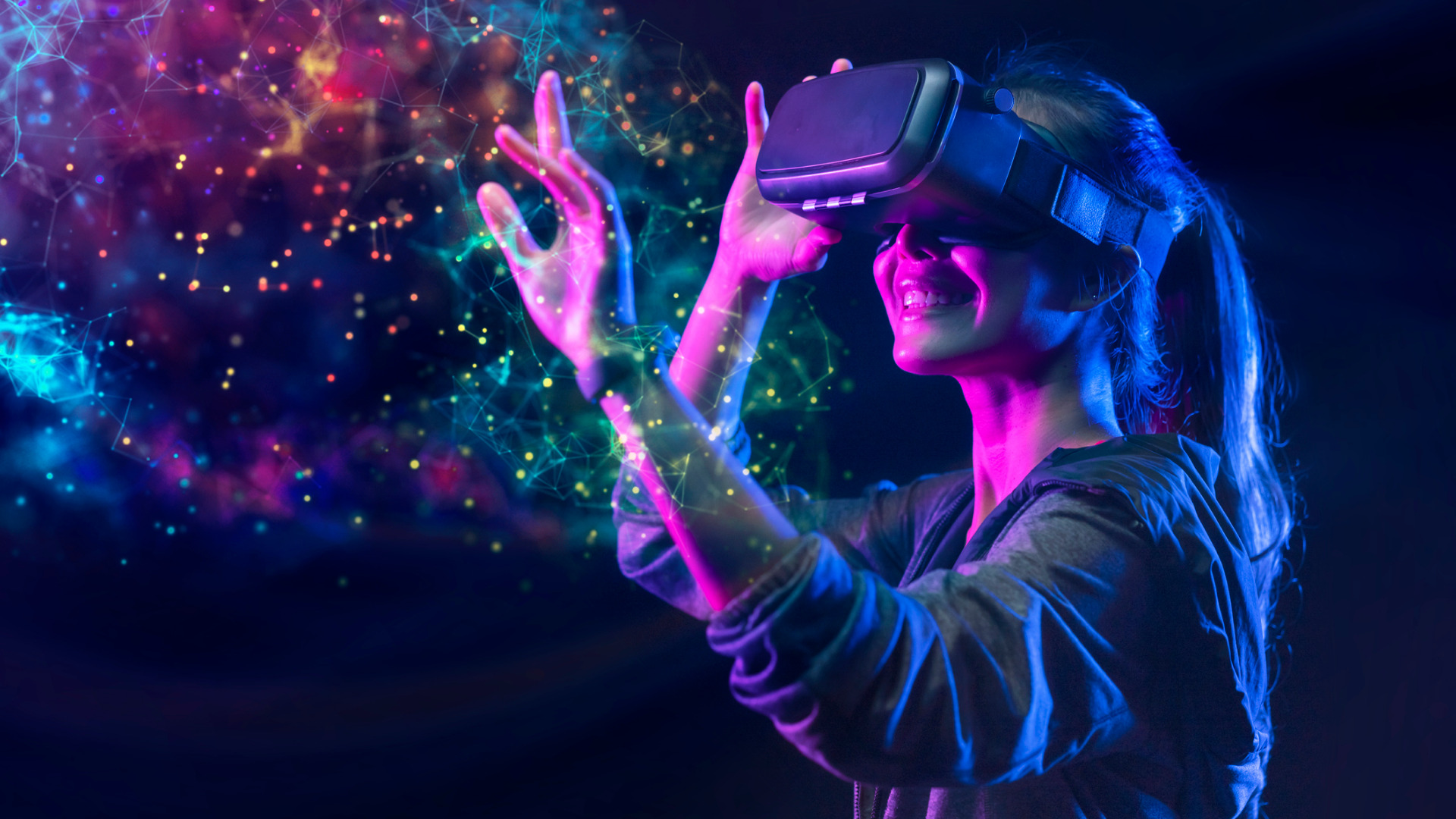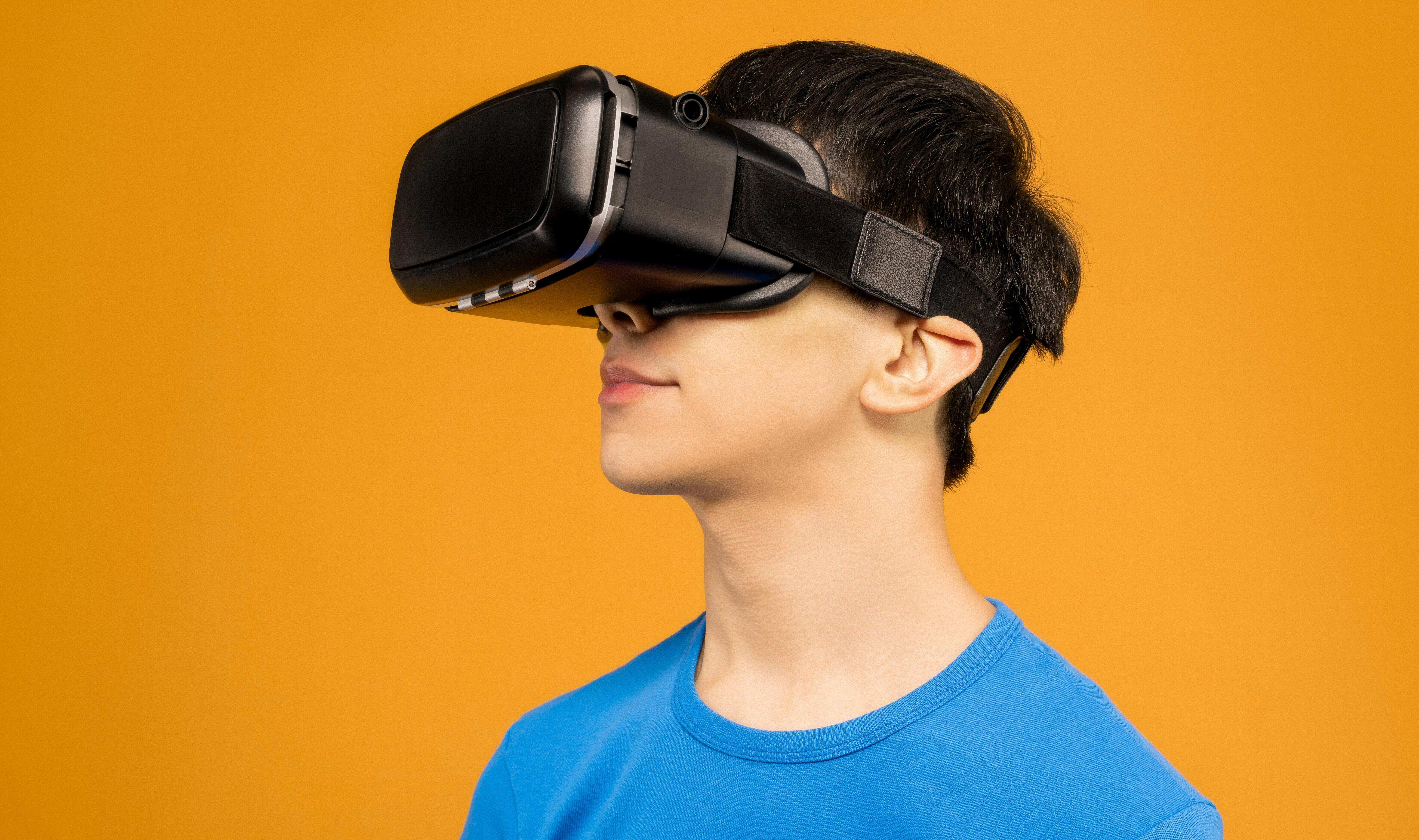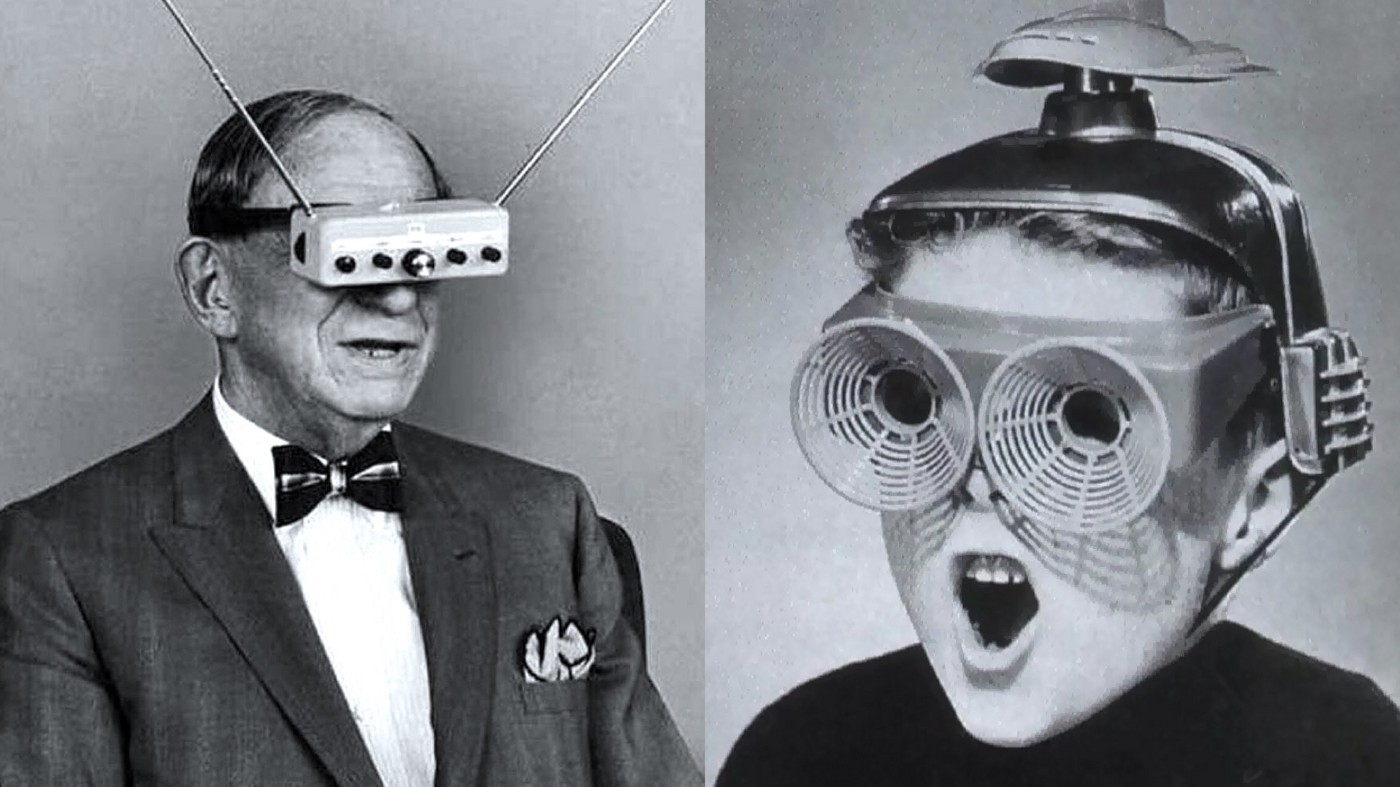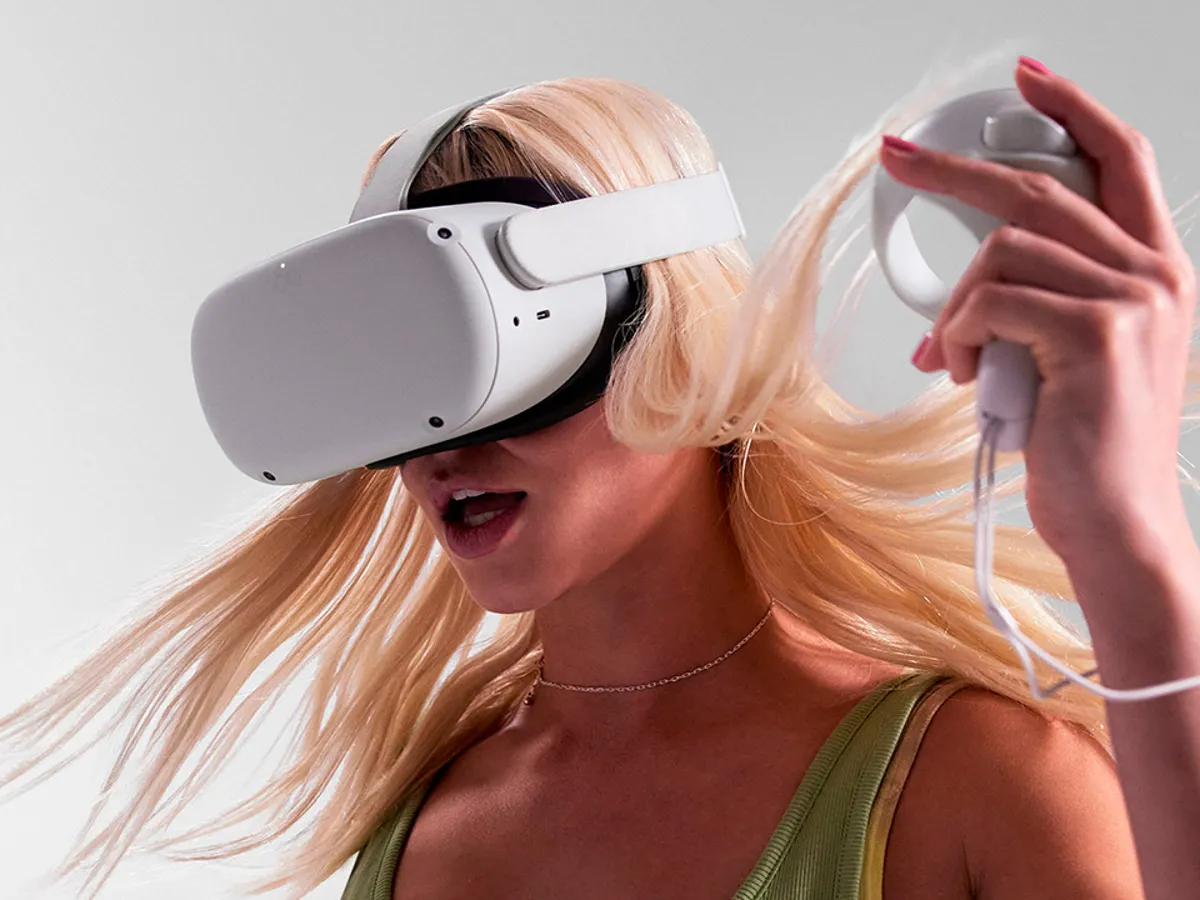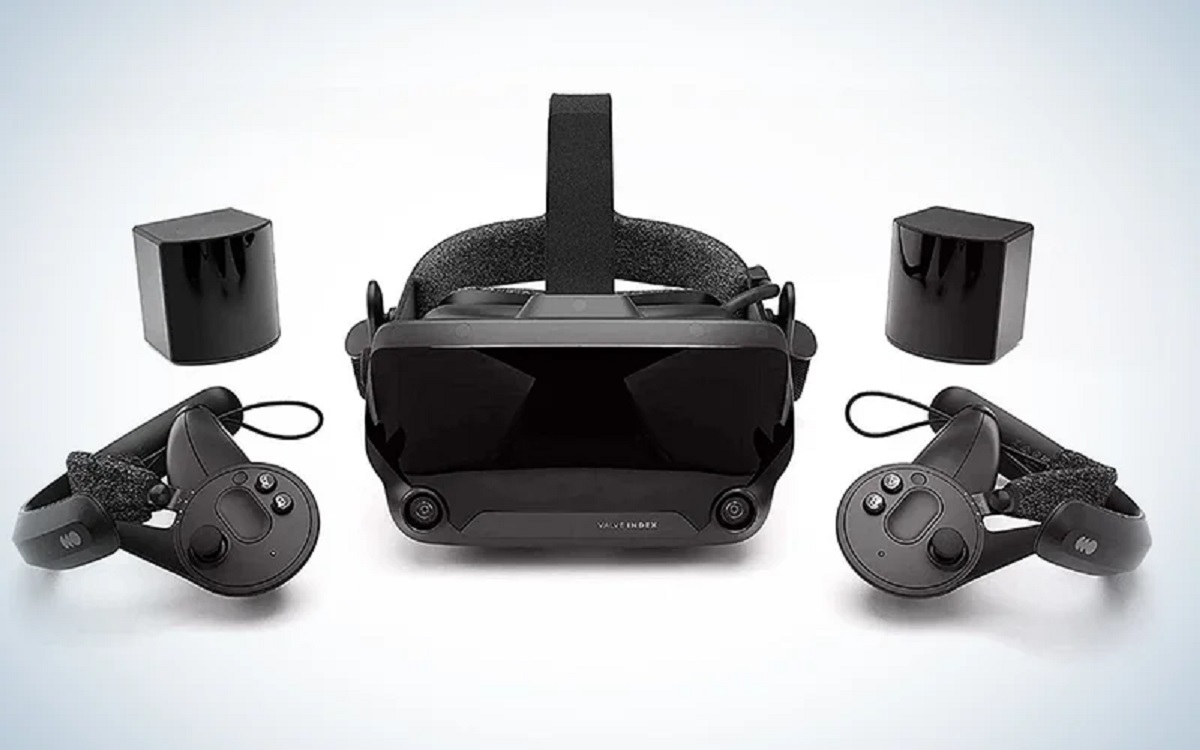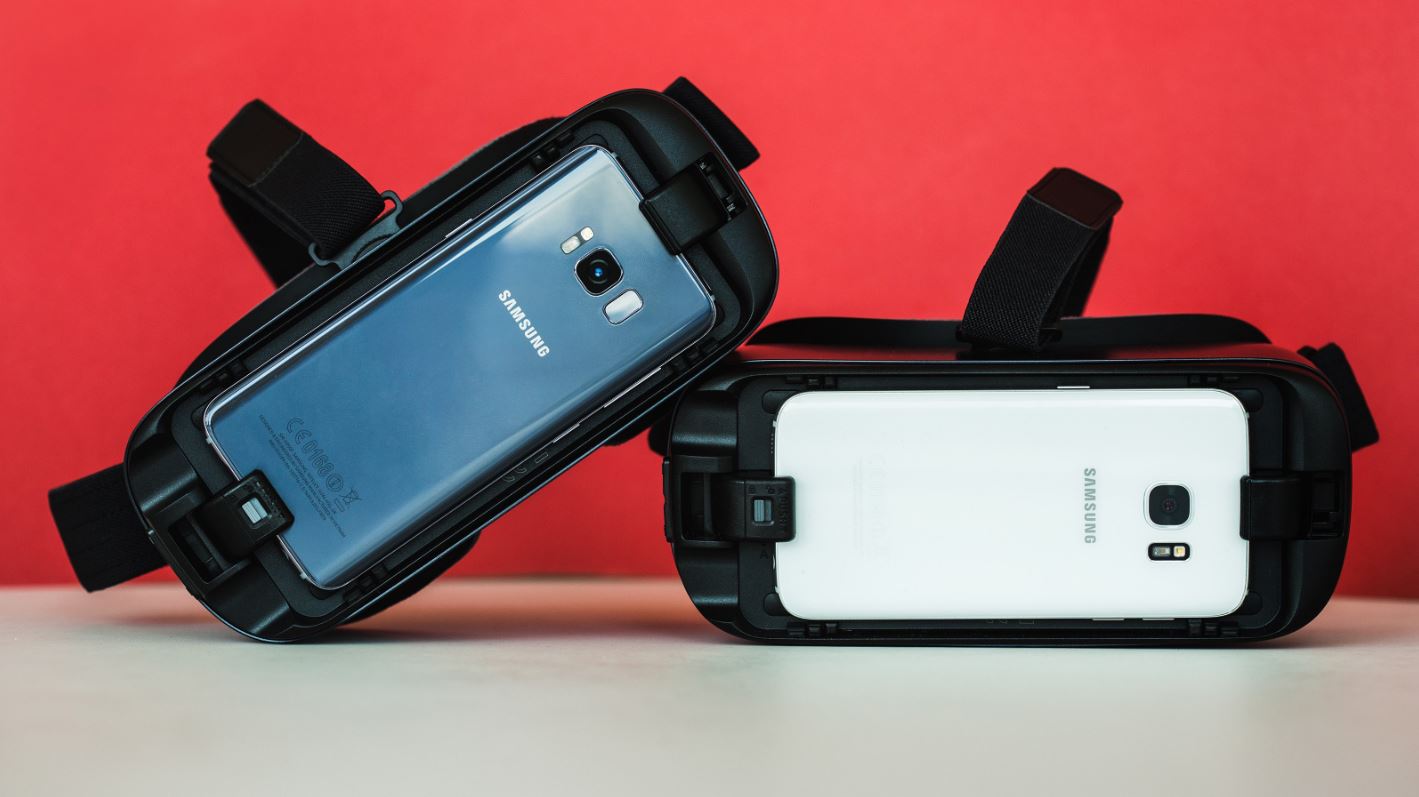What Is a Virtual Reality Headset?
A virtual reality headset is a device worn on the head that allows users to immerse themselves in a virtual environment. It works by combining high-definition visuals, surround sound, and realistic motion tracking to create an interactive and realistic experience for the user. The headset is typically connected to a computer or gaming console, which processes the data and generates the virtual world.
Virtual reality headsets are designed to provide a 360-degree field of view, making users feel like they are actually inside the virtual environment. They often come with built-in displays, lenses, speakers, and sensors to enhance the experience. The headsets may also have additional features such as hand controllers or motion trackers, allowing users to interact with the virtual world through their movements and gestures.
The technology behind virtual reality headsets is constantly evolving, with advancements in display resolution, motion tracking, and haptic feedback. These advancements are aimed at providing users with a more immersive and realistic experience. As virtual reality becomes more mainstream, the market for virtual reality headsets continues to grow, with new models and brands entering the market regularly.
Virtual reality headsets are not limited to gaming. They have a wide range of applications, including education, training, healthcare, entertainment, tourism, and more. With the ability to transport users to different places and simulate various scenarios, virtual reality headsets have the potential to revolutionize the way we learn, work, and entertain ourselves.
Overall, a virtual reality headset is an innovative device that allows users to step into a virtual world and experience things in a way that was previously unimaginable. It opens up a whole new realm of possibilities and experiences, making it an exciting technology for both casual users and professionals alike.
How Does a Virtual Reality Headset Work?
A virtual reality headset uses a combination of hardware and software to create an immersive virtual experience for users. The key components of a virtual reality headset include high-definition displays, lenses, motion sensors, and audio devices.
The process begins with the high-definition displays inside the headset. These displays, one for each eye, provide the visuals that users see in the virtual environment. The displays have a high resolution to ensure a clear and detailed image. They are also designed to provide a wide field of view to enhance the sense of immersion.
To create a 3D effect, virtual reality headsets use lenses. These lenses magnify the images displayed on the screens, making them appear larger and closer. By positioning the lenses at a specific distance from the eyes, the headset creates a 3D effect and gives the illusion of depth in the virtual world.
The motion sensors in the headset play a crucial role in tracking the user’s movements. They include gyroscopes, accelerometers, and sometimes even external cameras or sensors. These sensors detect the user’s head movements, allowing the virtual world to respond accordingly. For example, when the user turns their head to the left, the virtual environment will change accordingly, giving the illusion of actually being in that location.
Audio devices, such as speakers or headphones, are integrated into virtual reality headsets to provide spatial audio. This means that sound is delivered in a way that matches the user’s position and movements in the virtual environment. This further enhances the sense of immersion and realism.
The hardware components of a virtual reality headset are accompanied by specialized software. This software is responsible for rendering and displaying the virtual environment in real time. It takes input from the motion sensors and adjusts the visuals accordingly, creating a seamless and responsive experience. The software also handles the spatial audio, ensuring that the audio matches the user’s position in the virtual world.
By combining all these components, virtual reality headsets create a fully immersive experience. Users can explore virtual worlds, interact with objects and characters, and feel like they are actually present in the virtual environment. Whether for gaming, education, or other applications, virtual reality headsets provide an exciting and transformative way to experience digital content.
Types of Virtual Reality Headsets
Virtual reality headsets come in various forms and designs, each offering a unique experience. Here are some of the main types of virtual reality headsets available in the market:
- PC-based Headsets: These headsets require a powerful computer or gaming console to function. They offer high-quality visuals and a wide range of interactive experiences. Examples of PC-based headsets include the Oculus Rift, HTC Vive, and Windows Mixed Reality headsets.
- Standalone Headsets: Standalone virtual reality headsets do not require external devices or a computer to operate. They have their own built-in processors and storage, offering a wireless and portable virtual reality experience. Examples of standalone headsets include the Oculus Quest and the HTC Vive Focus.
- Mobile VR Headsets: These headsets utilize smartphones to deliver a virtual reality experience. The smartphone is inserted into the headset, acting as the display and processing unit. Popular mobile virtual reality headsets include the Samsung Gear VR and Google Cardboard.
- AR/VR Hybrid Headsets: These headsets combine augmented reality (AR) and virtual reality (VR) features. They allow users to switch between a virtual reality environment and an augmented reality overlay. The Microsoft HoloLens is an example of an AR/VR hybrid headset.
Each type of virtual reality headset has its own advantages and limitations. PC-based headsets offer the highest level of immersion and graphical fidelity, but they require a powerful computer and are generally more expensive. Standalone headsets provide a wireless and convenient experience, but their processing power and graphics capabilities may be more limited. Mobile VR headsets are affordable and accessible, but they rely on the capabilities and processing power of the inserted smartphone. AR/VR hybrid headsets blend the virtual and real worlds, allowing for a mix of virtual and augmented reality experiences.
When choosing a virtual reality headset, it is important to consider factors such as the intended use, budget, and technical requirements. Each type of headset offers a different balance of portability, performance, and price, catering to different user preferences and needs.
As technology continues to advance, new types of virtual reality headsets may emerge, offering even more immersive and interactive experiences for users. Whether it’s for gaming, education, or other applications, the range of virtual reality headsets available ensures that there’s a suitable option for everyone to explore the realm of virtual reality.
Benefits of Using a Virtual Reality Headset
Virtual reality headsets offer a range of benefits and have the potential to transform various industries. Here are some of the key advantages of using a virtual reality headset:
- Immersive Experience: Virtual reality headsets provide an unparalleled sense of immersion, allowing users to feel like they are physically present in a virtual environment. This level of immersion enhances the overall experience, whether it’s gaming, training simulations, or exploring virtual worlds.
- Realistic Learning Environments: Virtual reality is increasingly being used in education and training settings. It allows learners to engage with realistic simulations and environments, facilitating active learning and skill development. From medical simulations to architectural walkthroughs, virtual reality enhances training outcomes by providing hands-on experiences.
- Enhanced Gaming Experience: Gaming is one of the most popular applications for virtual reality headsets. They bring games to life by allowing players to fully immerse themselves in digital worlds and interact with characters and objects. The sense of presence and immersion in virtual reality gaming takes the gaming experience to a whole new level.
- Therapeutic Benefits: Virtual reality has shown promise in various therapeutic applications. It can be used to treat phobias and anxiety disorders through exposure therapy, help with pain management, and even assist in rehabilitation after injuries or surgeries. Virtual reality experiences can create a safe and controlled environment for therapy and rehabilitation.
- Exploration and Entertainment: Virtual reality headsets allow users to explore new places and engage in unique entertainment experiences. From virtual travel and tourism to immersive storytelling and virtual concerts, virtual reality opens up new possibilities for entertainment and cultural experiences.
- Increased Engagement: Virtual reality is known to captivate the attention and engage users on a deeper level compared to traditional media. It can be a powerful tool for marketing, training, and educational purposes, as it captures and holds users’ attention, leading to better retention and information recall.
These are just a few examples of the benefits of using a virtual reality headset. As technology continues to advance and new applications are discovered, the potential uses for virtual reality headsets are boundless. From creating memorable experiences to enhancing learning and therapeutic outcomes, virtual reality is becoming an increasingly integral part of our lives.
Popular Virtual Reality Headsets in the Market
With the growing popularity of virtual reality, there are several standout virtual reality headsets available in the market. These headsets offer impressive features and have gained recognition among users. Here are some of the popular virtual reality headsets:
- Oculus Rift: The Oculus Rift is a PC-based virtual reality headset that offers a highly immersive gaming experience. It features a high-resolution display, precise motion tracking, and intuitive touch controllers. The Oculus Rift has a strong library of games and a dedicated community of developers, making it a popular choice among gaming enthusiasts.
- HTC Vive: The HTC Vive is another PC-based virtual reality headset known for its room-scale tracking capabilities. It offers a wide field of view, high-resolution displays, and precise motion tracking with its base stations. The HTC Vive provides an immersive experience that allows users to walk around and interact within the virtual environment.
- Oculus Quest: The Oculus Quest is a standalone virtual reality headset that does not require a PC or console to operate. It features built-in sensors and cameras for positional tracking and hand tracking. The Quest offers wireless freedom and a growing library of games and experiences, making it a popular choice for casual users and VR enthusiasts alike.
- PlayStation VR: Designed for use with the PlayStation 4 console, the PlayStation VR headset offers an accessible and affordable virtual reality experience. It features a high-quality display, precise tracking, and compatibility with a wide range of games. The PlayStation VR has the advantage of being part of the established PlayStation gaming ecosystem, making it a popular choice for console gamers.
- Valve Index: The Valve Index is a PC-based virtual reality headset that offers high-quality visuals, precise tracking, and comfortable ergonomics. It has a high refresh rate and a wide field of view, providing a smooth and immersive experience. The Valve Index also offers finger tracking and supports external accessories, allowing for a more immersive and customizable experience.
These headsets have gained popularity due to their advanced features, immersive experiences, and strong support from developers. However, it is important to consider individual preferences, budget, and compatibility with existing hardware when choosing a virtual reality headset.
Additionally, there are other virtual reality headsets available in the market, such as the Windows Mixed Reality headsets, Samsung Odyssey, and more. Each headset offers its own set of features and advantages, catering to different user needs and preferences.
As the virtual reality industry continues to grow and technology advances, we can expect even more innovative virtual reality headsets to become popular in the market, offering enhanced experiences and pushing the boundaries of virtual reality.
Factors to Consider Before Buying a Virtual Reality Headset
Before purchasing a virtual reality headset, it is important to consider several factors to ensure that you make the right choice. Here are some key factors to think about before buying a virtual reality headset:
- Compatibility: Check the compatibility of the headset with your existing devices. Some virtual reality headsets require a powerful gaming PC or console, while others are standalone and do not require external hardware. Ensure that your computer or console meets the minimum requirements for the headset you are considering.
- Use Cases: Identify your primary use for the virtual reality headset. Are you primarily interested in gaming, education, or other applications? Different headsets cater to different use cases, so choose one that aligns with your interests and requirements.
- Comfort: Consider the comfort of the headset. Look for features like adjustable straps, cushioning, and lightweight designs. A comfortable headset is essential for long gaming or immersive experiences.
- Display Quality: Pay attention to the display quality, including resolution and pixel density. Higher resolutions result in sharper and more realistic visuals. Additionally, a wider field of view can enhance the immersive experience.
- Tracking and Controllers: Evaluate the tracking capabilities of the headset. Accurate and responsive motion tracking is crucial for a realistic virtual reality experience. Hand controllers or motion trackers can enhance interactivity and immersion, so consider headsets that offer these accessories.
- Content: Research the available content and games for the headset. A wide variety of content will ensure that you have a range of experiences to enjoy. Check the library of games, educational applications, simulators, and other content that is compatible with the headset.
- Price: Set a budget for your virtual reality headset. Prices can vary significantly depending on the features, quality, and brand. Determine your budget and compare options to find a headset that offers the best value for your money.
- User Reviews: Read reviews and opinions from other users to get a sense of their experiences with the headset. User reviews can provide valuable insights into the comfort, performance, and overall satisfaction of the product.
Considering these factors will help you make an informed decision when purchasing a virtual reality headset. It is essential to find a headset that meets your specific needs, whether it’s for gaming, educational applications, or other experiences. Take the time to research and explore different options to find the perfect virtual reality headset for you.
Virtual Reality Headsets in Gaming
Virtual reality has revolutionized the gaming industry, providing an immersive and interactive experience like never before. Gaming with virtual reality headsets takes players into a whole new world, blurring the line between the digital and real world. Here are some key aspects of virtual reality headsets in gaming:
Immersive Gameplay: Virtual reality headsets offer a level of immersion that traditional gaming cannot match. With a headset on, players are transported into the virtual world, where they can explore, interact with objects, and engage with characters in a completely immersive way. The ability to physically look around and move within the game world enhances the sense of presence and realism.
Enhanced Sensory Experience: Virtual reality gaming engages multiple senses, creating a more engaging and realistic experience. With high-definition displays, players can see the virtual environment with stunning visuals and lifelike details. Spatial audio technology allows players to hear sounds coming from different directions, further enhancing the immersion. Some advanced virtual reality systems also incorporate haptic feedback, providing tactile sensations that allow players to feel physical interactions within the game.
New Levels of Interaction: Virtual reality headsets introduce a new level of interaction in gaming. Players can use hand controllers or motion trackers to physically interact with objects and manipulate the virtual world. Whether it’s shooting a gun, throwing a virtual object, or using hand gestures, the level of control and interaction in virtual reality gaming adds depth and excitement to the gameplay experience.
Diverse Gaming Experiences: Virtual reality enables a wide range of gaming experiences. From epic adventures and action-packed shooters to puzzle-solving and exploration games, virtual reality offers diverse genres and experiences for players to enjoy. Whether players want to dive into a fantasy realm, explore space, or experience the thrill of racing, virtual reality gaming has something for everyone.
Social and Multiplayer Capabilities: Virtual reality gaming also offers social and multiplayer capabilities. Players can connect and interact with friends or other gamers from around the world in virtual reality environments. Whether it’s teaming up for cooperative missions or competing in intense multiplayer battles, the social aspect of virtual reality gaming adds a new dimension to the gameplay experience.
Virtual reality headsets have opened up a new frontier in gaming, offering unprecedented immersion, interactivity, and sensory experiences. As the technology continues to advance, we can expect even more immersive and innovative virtual reality gaming experiences to emerge, pushing the boundaries of what is possible in the gaming world.
Virtual Reality Headsets in Education and Training
Virtual reality headsets have tremendous potential in the field of education and training, offering innovative ways to engage learners and enhance learning outcomes. Virtual reality in education and training provides realistic and immersive experiences that can be utilized across various disciplines. Here are some key aspects of virtual reality headsets in education and training:
Experiential Learning: Virtual reality provides experiential learning opportunities by simulating real-life scenarios. Whether it’s exploring historical sites, conducting scientific experiments, or practicing complex procedures, virtual reality allows learners to actively engage and experience concepts firsthand. This hands-on approach to learning enhances understanding, retention, and application of knowledge.
Safe and Controlled Environments: Virtual reality creates safe and controlled learning environments, allowing learners to practice in realistic settings without any actual risk. This is particularly beneficial in fields such as healthcare and emergency management, where real-world mistakes can have serious consequences. By using virtual reality headsets, learners can practice and develop skills without jeopardizing the safety of themselves or others.
Enhanced Engagement and Motivation: The immersive nature of virtual reality captivates learners’ attention and motivates them to actively participate in the learning process. Virtual reality experiences are inherently engaging, making learning enjoyable and fostering a sense of curiosity. This increased engagement leads to better knowledge retention and improved learning outcomes.
Interactive Simulations: Virtual reality headsets allow learners to interact with objects and environments, promoting hands-on learning experiences. Whether it’s conducting virtual experiments, manipulating virtual objects, or solving interactive puzzles, the interactive nature of virtual reality facilitates active learning and critical thinking skills.
Access to Hard-to-Reach Environments: Virtual reality provides access to environments and experiences that may be otherwise difficult to reach, such as inaccessible historical sites or distant locations. This allows learners to explore and study these environments in a more immersive and engaging way, broadening their horizons and expanding their understanding of the world.
Remote and Distance Learning: Virtual reality can facilitate remote learning experiences, bridging the gap between teachers and learners in different locations. Learners can connect virtually and participate in collaborative learning experiences, regardless of physical distance. This opens up new possibilities for remote and distance education, making education more accessible and inclusive.
Virtual reality headsets are transforming the field of education and training, offering unprecedented opportunities for immersive and interactive learning experiences. As the technology continues to advance, virtual reality will play an increasingly vital role in enhancing education and training, preparing learners for the challenges of the future.
Virtual Reality Headsets in Healthcare
Virtual reality headsets are making a significant impact on the healthcare industry, offering unique opportunities for patient care, medical training, and therapy. The immersive and interactive nature of virtual reality allows for new possibilities in healthcare. Here are some key aspects of virtual reality headsets in healthcare:
Medical Training and Education: Virtual reality provides a safe and realistic environment for medical professionals to practice and enhance their skills. Surgeons can simulate complex surgeries, medical students can practice diagnosing and treating patients, and healthcare professionals can train for emergency scenarios. Virtual reality training improves confidence, decision-making abilities, and precision in real-life medical settings.
Pain and Anxiety Management: Virtual reality has been successfully used as a distraction tool for pain and anxiety management during medical procedures. By immersing patients in relaxing or engaging virtual environments, virtual reality headsets can help reduce pain perception, anxiety, and stress. This can be particularly beneficial for patients undergoing painful procedures or those with anxiety-related disorders.
Phobia and Anxiety Treatment: Virtual reality exposure therapy has proven effective in treating phobias and anxiety disorders. By gradually exposing patients to their fears in a virtual environment, virtual reality can desensitize them and help them overcome their anxieties in a safe and controlled manner. This approach has been used to treat phobias such as fear of heights, flying, public speaking, and post-traumatic stress disorder (PTSD).
Physical Rehabilitation: Virtual reality can assist in physical rehabilitation by providing interactive exercises and virtual environments that promote movement, coordination, and balance. Virtual reality rehabilitation programs are particularly useful in the recovery of patients with stroke, spinal cord injuries, or other physical impairments. These programs can motivate patients, offer real-time feedback, and track progress.
Mental Health Therapy: Virtual reality headsets have also shown promise in the field of mental health therapy. By creating virtual environments that simulate specific scenarios or triggers, virtual reality can be used to expose patients to challenging situations and work through cognitive or emotional difficulties. This therapy approach has been used for anxiety disorders, phobias, and post-traumatic stress disorder.
Medical Research and Visualization: Virtual reality headsets are used in medical research to visualize and analyze complex medical data. Researchers can immerse themselves in three-dimensional models of organs, molecules, or biological structures, aiding in the understanding of diseases and anatomical structures. Virtual reality enhances the visualization and interpretation of medical imaging, facilitating more accurate diagnoses and treatment planning.
Virtual reality headsets are becoming valuable tools in healthcare, transforming medical training, patient care, and therapy. As technology advances, virtual reality will continue to play a crucial role in enhancing various aspects of healthcare, ultimately leading to improved patient outcomes.
Virtual Reality Headsets in Entertainment and Media
Virtual reality headsets are revolutionizing the entertainment and media industries, offering immersive and interactive experiences like never before. From gaming and movies to live events and storytelling, virtual reality is reshaping how we consume and engage with entertainment. Here are some key aspects of virtual reality headsets in entertainment and media:
Immersive Gaming: Virtual reality gaming provides a level of immersion that traditional gaming cannot match. With virtual reality headsets, players are transported into a fully realized virtual world, where they can interact, explore, and engage with the game environment and characters in ways that were previously unimaginable. This heightened immersion creates a more captivating and thrilling gaming experience.
Virtual Cinemas and Movie Experiences: Virtual reality headsets allow users to enjoy movies and cinematic experiences in a whole new way. Virtual cinemas create a virtual theater environment, making it feel like you’re actually sitting in a theater, complete with a large screen and surround sound. Additionally, virtual reality can be used to create immersive movie experiences where viewers can interact with the environment or follow the story from different perspectives.
Live Events and Virtual Concerts: Virtual reality headsets enable users to attend live events and concerts from the comfort of their homes. With the ability to immerse themselves in a virtual venue, users can experience the atmosphere and energy of a live event as if they were physically present. Virtual reality concerts provide an intimate and interactive way to enjoy live music, with the ability to move around the virtual space and interact with other fans.
Immersive Storytelling and Narrative Experiences: Virtual reality allows for a new form of storytelling, where users become active participants in the narrative. By wearing a virtual reality headset, users can step into virtual worlds and experience stories from a first-person perspective. This immersive storytelling can take the form of interactive narratives, virtual reality experiences, or even virtual reality documentaries, providing a deeply engaging and memorable experience.
Virtual Theme Parks and Attractions: Virtual reality headsets are being utilized in theme parks and attractions to enhance the visitor experience. Virtual reality rides and simulators transport guests to virtual worlds, adding an extra layer of excitement and entertainment. With virtual reality headsets, visitors can embark on thrilling adventures and experience new sensations, making theme park experiences even more immersive and engaging.
360-Degree Videos and Virtual Tours: Virtual reality headsets allow users to explore 360-degree videos and virtual tours. Whether it’s exploring famous landmarks, visiting museums, or taking virtual trips around the world, virtual reality provides a sense of presence and immersion that brings these experiences to life. Users can feel like they’re actually there, experiencing different locations and cultures.
Virtual reality headsets are transforming the entertainment and media industries by offering new and immersive ways to engage with content. From gaming to live events and storytelling, virtual reality opens up a whole new realm of possibilities, promising an exciting and captivating future for entertainment and media.
Virtual Reality Headsets in Tourism and Travel
Virtual reality headsets are revolutionizing the tourism and travel industry, providing immersive and interactive experiences that transport users to different destinations and immerse them in unique cultural experiences. From virtual tours to destination previews, virtual reality is reshaping how we explore and plan our travels. Here are some key aspects of virtual reality headsets in tourism and travel:
Virtual Destination Previews: Virtual reality allows travelers to preview destinations before their trips. Using a virtual reality headset, users can virtually explore landmarks, attractions, and accommodations, gaining a realistic sense of the destination’s ambiance and attractions. This allows travelers to make informed decisions and bring their travel experiences to life even before they embark on their journey.
Virtual Tours and Sights: Virtual reality headsets offer virtual tours of famous landmarks and attractions around the world. Users can visit historical sites, museums, natural wonders, and cultural landmarks, experiencing them in a fully immersive and interactive way. Virtual reality tours provide a sense of presence, allowing users to feel like they are physically exploring these destinations.
Immersive Cultural Experiences: Virtual reality headsets offer immersive cultural experiences by allowing users to engage with different cultures. Whether it’s learning about traditional ceremonies, exploring local cuisines, or participating in cultural festivities, virtual reality provides an opportunity for travelers to gain a deeper understanding of the customs, traditions, and lifestyles of different cultures.
Accessible Travel: Virtual reality opens up travel experiences to individuals who may have limitations or difficulties in physical travel. People with mobility issues or those who are unable to travel for various reasons can still experience the wonders of different destinations through virtual reality. This inclusivity allows for a more accessible and inclusive travel experience for all.
Destination Marketing: Virtual reality headsets are increasingly being used in destination marketing campaigns. By providing virtual reality experiences that showcase the beauty and uniqueness of a destination, travel agencies, hotels, and tourism boards can attract potential visitors. Virtual reality offers a more engaging and immersive marketing tool, enticing travelers to explore and discover new destinations.
Travel Planning Assistance: Virtual reality can assist travelers in planning their trips. By experiencing destinations virtually, users can get a better understanding of the layout, attractions, and logistics of a destination, helping them make more informed decisions about accommodations, activities, and itineraries. Virtual reality can provide a realistic preview of what to expect and guide travelers in their planning process.
Virtual reality headsets are transforming the way we explore, plan, and experience tourism and travel. They offer a glimpse into destinations, cultures, and experiences, creating a heightened sense of anticipation and excitement. As virtual reality technology advances, we can expect even more immersive and interactive travel experiences that will redefine the way we discover the world.
Conclusion
Virtual reality headsets have brought about a paradigm shift in various industries, including entertainment, education, healthcare, tourism, and more. They provide users with immersive and interactive experiences that were previously unimaginable. From gaming in realistic virtual worlds to exploring distant destinations from the comfort of your home, virtual reality offers a range of incredible possibilities.
In the world of gaming, virtual reality headsets have revolutionized the way we play and interact with digital content. They have elevated the level of immersion, allowing players to step into virtual worlds, engage with characters, and experience gameplay in a whole new way. The gaming industry has embraced virtual reality, and it continues to push the boundaries of what is possible.
Virtual reality headsets have also made a significant impact in education and training. They provide experiential and realistic learning opportunities, allowing students to practice skills and explore concepts in a safe and controlled environment. Virtual reality has become a powerful tool for medical training, therapy, and even mental health treatment, offering a level of engagement and effectiveness that traditional methods cannot match.
In the healthcare industry, virtual reality headsets have transformed patient care, pain management, and rehabilitation. They provide distraction and relaxation for patients during medical procedures, assist in physical rehabilitation, and aid in the treatment of phobias, anxiety disorders, and PTSD. Virtual reality is helping healthcare professionals deliver better care and improve patient outcomes.
Moreover, virtual reality has expanded the possibilities in entertainment and media. It offers new avenues for storytelling, provides users with virtual cinemas, and allows for immersive live events and virtual concerts. Virtual reality adds depth and engagement to entertainment experiences, making them more captivating and memorable.
The tourism and travel industry benefits from virtual reality headsets by offering virtual destination previews and immersive cultural experiences. Travelers can explore destinations, landmarks, and attractions virtually, gaining a realistic sense of what to expect and immersing themselves in different cultures. Virtual reality makes travel more accessible and inclusive by providing virtual tours and bringing destinations closer to those who are unable to physically travel.
In conclusion, virtual reality headsets have opened up a world of possibilities across various industries. They have transformed the way we play, learn, experience healthcare, enjoy entertainment, and explore the world. As technology continues to advance, virtual reality will undoubtedly play a more significant role, continually pushing the boundaries of what is possible and enhancing the way we interact with digital content.







